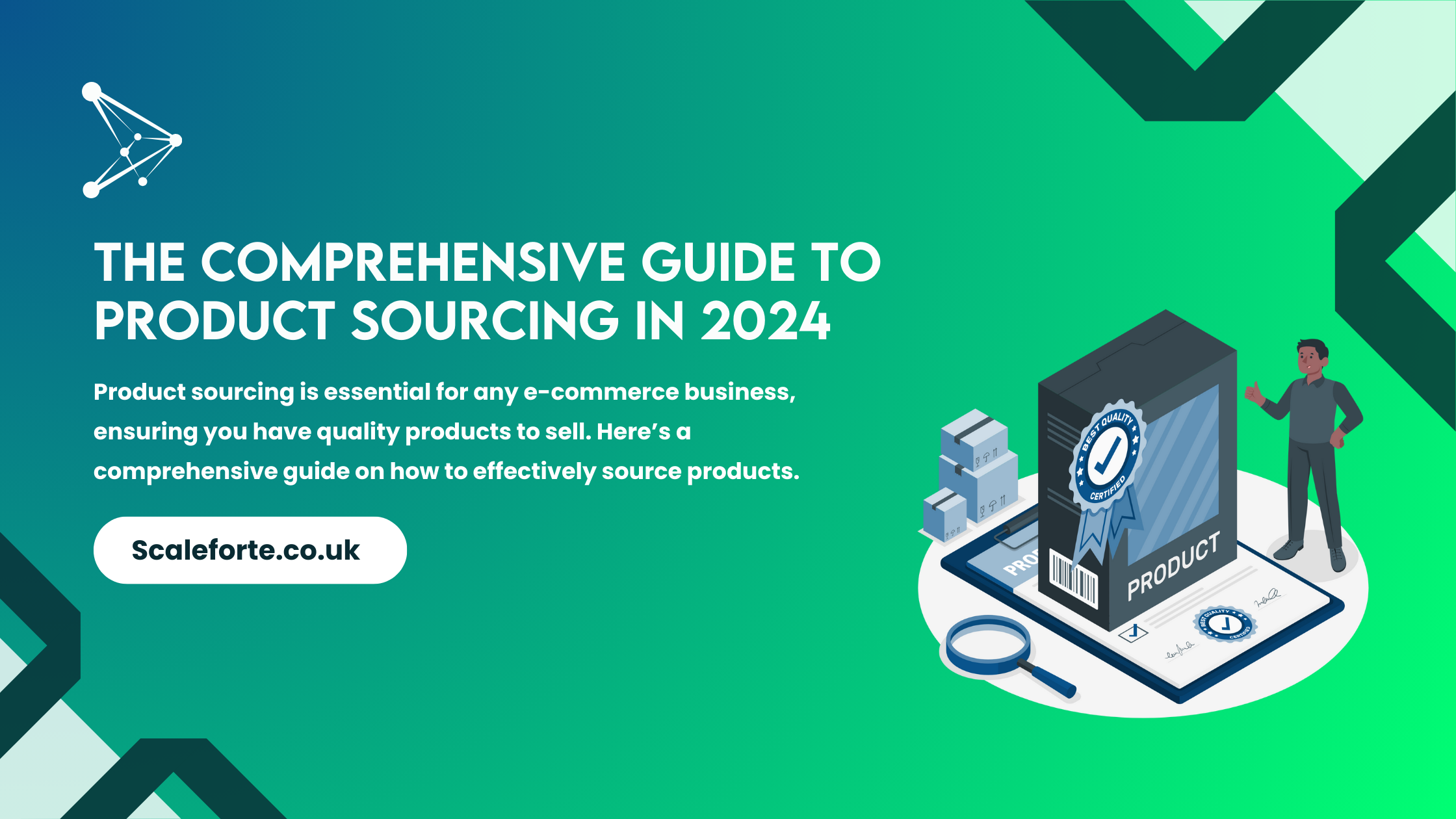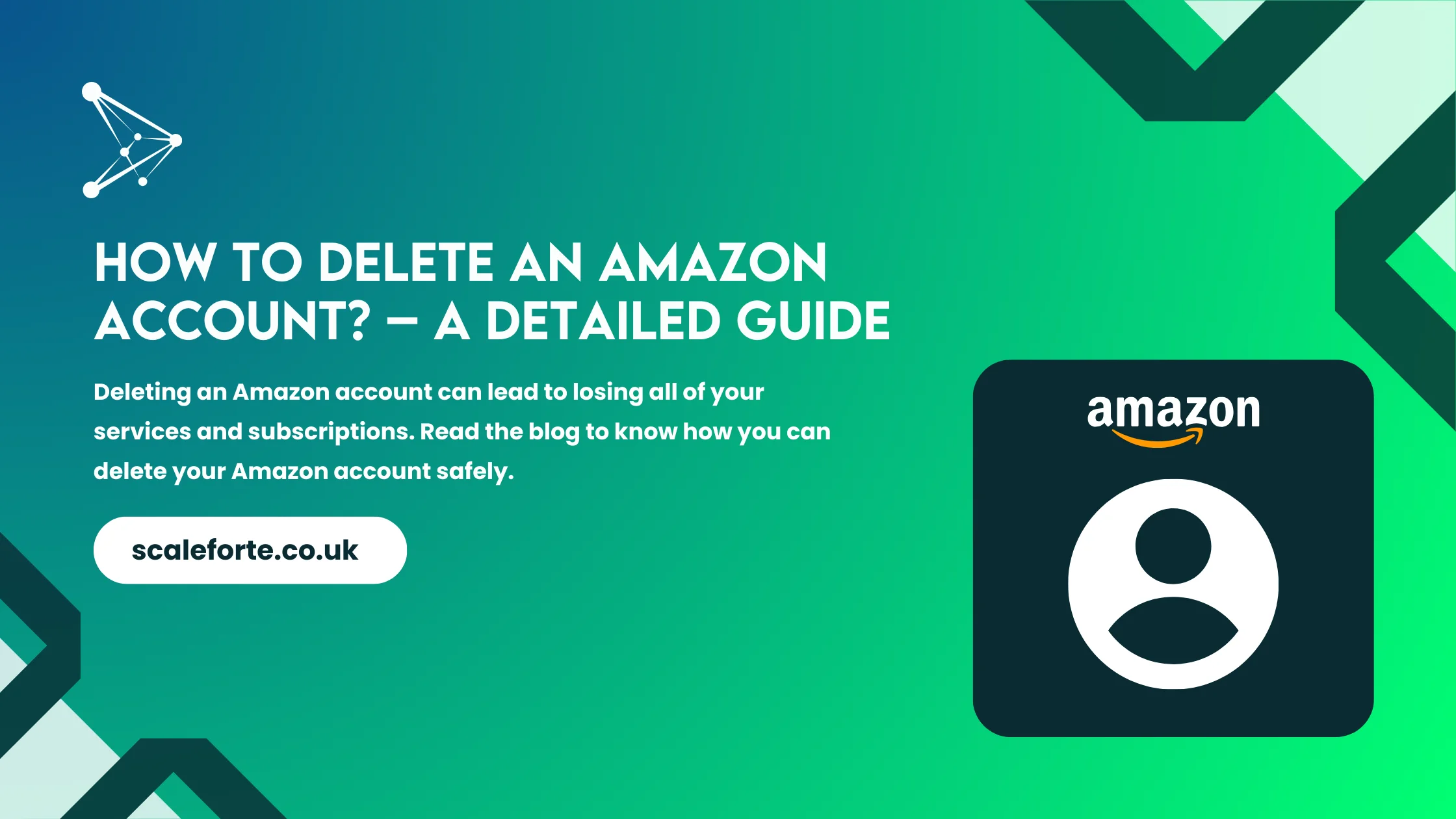The Comprehensive Guide To Product Sourcing In 2024

Product sourcing is one of the most demanding tasks one has to do for a business to grow and be profitable. Some of you might be wondering what product sourcing is. Product is finding, evaluating, and partnering with suppliers to get your desired products to keep your business operational. It is one of the most crucial tasks because it does not matter if you’re a small-scale business or an already established one; a good supply of products can be the difference in your survival in the market with a thriving business, whereas a lazy supply of products can kill your company and create multiple other problems for you.
In this article, we will discuss product sourcing on Amazon or other e-commerce platforms; let’s get right into it then.
Understanding Product Sourcing:
Product sourcing involves multiple strategies or approaches. You can get your products directly from the domestic market, international sourcing, drop shipping, or wholesale. Each strategy has its specific advantages and disadvantages, along with the challenges you will face, depending on the product type, cost, and time management. Let’s discuss what you should do before anything:
1) Define your Sourcing Strategy:
Devise a detailed plan related to your product sourcing that matches the market dynamics.
2 )Analyze Market Trends:
Stay on top of the market trends and consumer preferences, which will help you make better sourcing decisions.
3) Regulatory Compliance:
Remember the ethical and legal considerations that will abide by the standard rules and regulations set.
Also Read: What is Buy Box in Amazon?
Setting a Sourcing Strategy:
Devising a great sourcing strategy is something that will define your next moves. Start by defining specific requirements for your product, keeping multiple factors in mind, including quantity, quality standards, and price. Also, it analyzes market trends and patterns and ensures that they directly align with consumer preferences and industry dynamics. Lastly, factor in the legal and ethical requirements to ensure your product is suitable for your market and abide by all the rules any e-commerce platform or country might have set, including copyrights and more.
Finding Feasible Suppliers:
Now, the next step is finding the right supplier for your product; the following steps can be taken to find the best supplier that suits you and fills all your business’s needs:
1) Utilize Online Platforms:
Go on an online marathon and explore a wide range of suppliers available on multiple online platforms like Alibaba that specially cater to product sourcing.
2) Attending Trade Shows:
Engaging with suppliers directly can make a big difference; attending these trade shows will open new product sourcing opportunities that best suit you.
3) Networking:
Your professional network can also play a massive part in the product sourcing of your product; you can seek referrals from some of the most trusted and highly respected contacts within your industry
Also Read: Top 5 Trends in Amazon Marketing in 2024
Evaluating Suppliers:
The next step after you’ve created a list of some of the suppliers that could suit you and your business needs and are fulfilling the criteria you set before is time to evaluate the suppliers for product sourcing; let’s discuss it below:
1) Establish an Evaluation Criteria:
Set some metrics to asses your supplier, which include their reputation, production capacity, quality control, financial stability, and ethical practices.
2) Request Samples of Your Product:
Get a few samples of your products; this will allow you to analyze the delivery time, quality of the product, and overall cost.
3) Verifying Suppliers:
Verify your suppliers through audits or reference checks to ensure they are reliable and won’t create problems in the long run.
Finalizing Contracts:
The next step will be to finalize your contract, including price negotiations and a few other steps that will benefit you and your supplier so that no product-sourcing issues are created once you’ve started the process. It would be best if you did the following things:
1) Negotiate Fair Terms:
Negotiate to establish mutually beneficial pricing, payment, and delivery terms.
2) Quality Standards:
Mention the quality control protocols beforehand to ensure that the products in supply don’t have any reliability and quality-related issues.
3) Formal Agreement:
Create a final, formal agreement through a contract so there is no future issue.
Also Read: 6 Must-Have AI Tools for Amazon Sellers
Removal of Risks:
A partnership with your supplier can be highly beneficial for your business, but at the same time, it also involves some risks that you might be ready to tackle.
1) Diverse Suppliers:
Keep a few other suppliers on hand to remove any risks and ensure that you are not 100% dependent on one source only.
2) Contingency Plans:
Always have an alternative plan ready to tackle any future disruption related to your product supply.
3) Market Changes:
Be aware of any market changes that might directly or indirectly affect your sourcing strategies and plan for such situations.
Next, we will discuss product sourcing on Amazon, what things you need to be aware of, and what will best suit your business if you have an e-commerce store on Amazon.
Product Sourcing on Amazon::
As we all know, Amazon is a pioneer in the e-commerce industry, offering multiple product-sourcing opportunities. The vast marketplace that Amazon is, it makes it one of the best platforms to sell your products. Let’s discuss briefly about product sourcing on Amazon:
1) Amazon Marketplace:
Amazon allows third-party sellers to list and sell products alongside its offerings; sellers can source products from several suppliers, including wholesalers, manufacturers, and distributors.
2) Fulfillment by Amazon (FBA):
With the assistance of FBA, sellers can use Amazon’s fulfillment infrastructure to store, pack, and ship their products to customers, streamlining the logistics process and enabling sellers to focus more on the sourcing and sales department.
3) Private Labeling:
Many sellers choose private labeling, in which they source products from manufacturers and customize them with their branding. This offers them complete control over the quality of their product, diversifying them from other sellers.
4) Amazon Suppliers:
Amazon works directly with suppliers and manufacturers to source products for its operations; sellers can also explore these opportunities to become Amazon’s suppliers or use Amazon’s supplier network for their sourcing needs.
Also Read: Top 5 Trends in Amazon Marketing in 2024
Hire an Amazon Agency in the UK
Conclusion:
In conclusion, we can say that product sourcing is an art that needs to be mastered to see your business thrive in today’s world, where e-commerce platforms are changing the world dynamics and taking over conventional brick-and-mortar stores. Follow all the above-described steps to get the best supplier for your products, and once you get through this product sourcing issue, things will get a lot easier for your business, and it will get on the path to success.
FAQs About Product Sourcing:
Without a set product sourcing, you won’t have a business, and getting the right product for your business will reward you in the future.
International sourcing, drop shipping, wholesale acquiring, and domestic sourcing.
Set clear communication standards and regular reviews, and continuously collaborate with suppliers to improve your product.
Alternative plans should be on standby, and market changes should be continuously monitored for prompt action.
Remember the shipping costs, import taxes, and currency exchange rates.
Regularly monitor performance indicators like cost savings, supplier performance, and, most importantly, customer satisfaction.
Have any question?
Do not hesitate to contact us. We’re a team of experts ready to talk to you.




